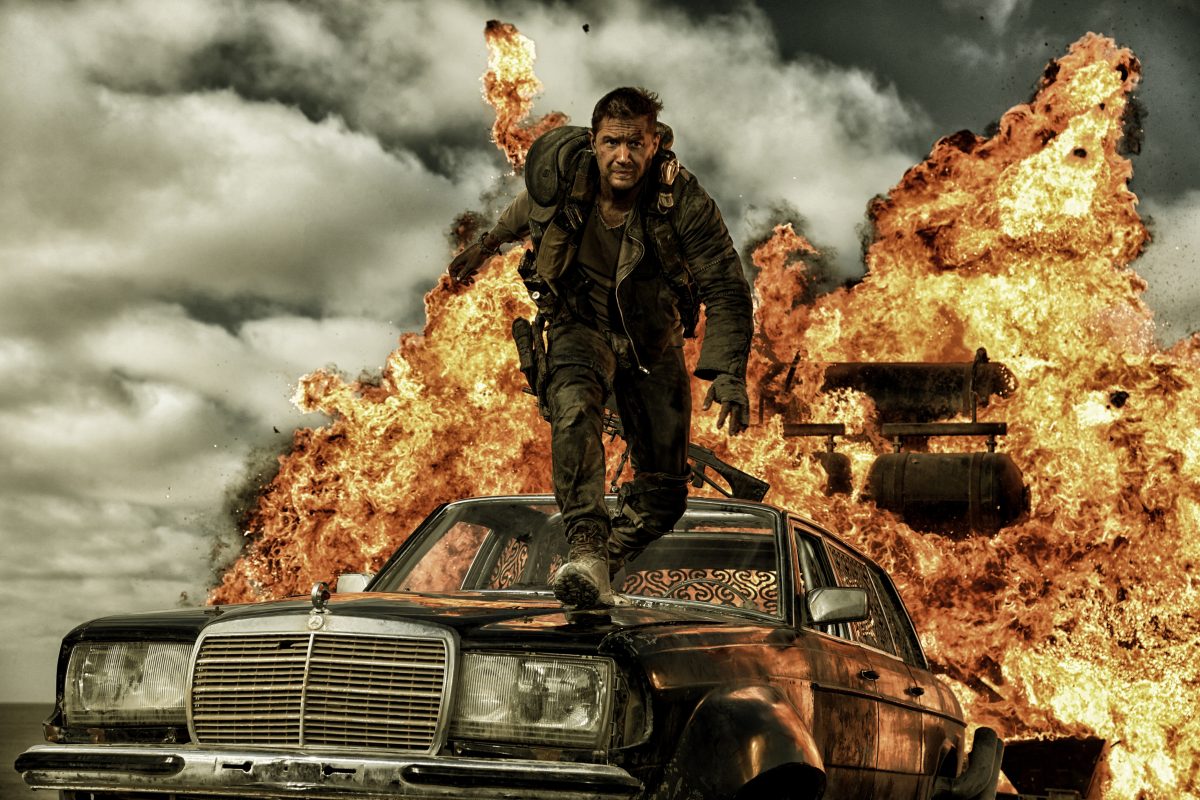
I missed the advance critic’s screening for Mad Max: Fury Road but it was impossible to miss the film’s near-deafening buzz. “George Miller just schooled every contemporary filmmaker,” someone tweeted. “Mic drop,” tweeted someone else. Over at Rotten Tomatoes, the film sports a gaudy 98% “fresh” rating.
Now, I’ve finally seen the film myself and all I can say is, “okay, I get it.” I mean, it’s an undeniable achievement—a rich, eccentric, pedal-to-the-metal depiction of an obsessively fleshed-out post-apocalyptic world. It seems that the 70-year-old Miller, who directed the first three Mad Max films, has had 30 years to cultivate his vision. It’s an ugly-beautiful smorgasbord of clay and metal and dust, populated by all manner of mutants and crust punks and gnarly warriors, where a grotesque warlord named Immortan Joe (Hugh Keays-Byrne) oppresses the people by controlling the most valuable commodity—water—and promising salvation if they obey him. (“Grotesque” is the word of the day here: Purulent tumors, rotting flesh, and gangrenous limbs are all par for the course.)
So yeah, I get it. I admired the film a lot. But did I love it? Well…let’s put it this way: There is probably about 15 minutes of dialogue in the film, in total. Character development is not high on its list of priorities—they’re more like rough character sketches. Our hero, Max Rockatansky (Tom Hardy, taking over for Mel Gibson), barely speaks at all—he’s a bit of a grunter. An ex cop, Max is half crazed with guilt from having watched his wife and children die—he’s haunted by a young girl (presumably his daughter), who sometimes appears to him as a beautiful apparition, other times as a skeletal specter.
As the film begins, Max has been captured by the War Boys, a breed of ghostly white, bald man-children—scarred and stapled and riddled with bulbous tumors—bred to be Immortan Joe’s fighters. Max, his face partly covered by a Bane-style iron mask (curious, since Hardy also played Bane), is to serve as a human blood supplier for the War Boy Nux (Nicholas Hoult), until he manages to escape when Immortan Joe’s army goes after a rogue commander named Imperator Furiosa (Charlize Theron). Furiosa is certainly the film’s best creation—a bald she-warrior with a metal arm, a giant smoke-belching war rig, and a righteous cause. She’s trying to bring Immortan Joe’s Five Wives to the childhood home that she barely remembers, a utopian land of female warriors.
Much has been written about the film’s feminism—and rightly so. Not only is Theron’s Furiosa a glorious and fearless leader, her tribe of womenfolk are fierce as hell. Better still? Some of them are OLD women—literally unheard of in any action film I can recall.
Still, it loses some of its feminist bona fides by having the Five Wives look like something out of a teenage male fantasy. While literally every character is the film is scarred and gnarly in some way, the Five Wives are pristinely preserved beauties—a redhead, two blondes, and two brunettes (*eyeroll*) who wear flowy, midriff baring cotton frocks. There is one gratuitous moment of female nudity, too—in case you were worried that might be left out.
In the end, it’s the cars that take center stage—festooned with skulls and guns and spikes (one has an electric guitarist affixed to its hood, a kind of shredding human hood ornament). Think of the film as a post-apocalyptic Fast and Furious, only way smarter and cooler. If that sounds like your idea of heaven, you should apparently get in line.
